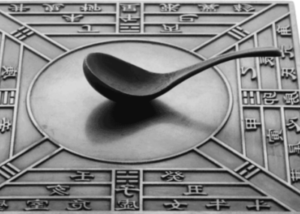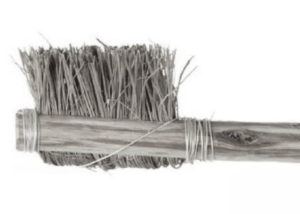The ancient Chinese civilization was one of the most advanced societies of its time, with numerous technological innovations. Many of these ancient Chinese inventions have profoundly impacted our modern way of life, from papermaking to the compass. Despite these significant contributions, many of these inventions remain unknown in the West.
Learning about inventions by ancient China and technology is crucial.
It allows us to understand the past better and appreciate the ingenuity and creativity of ancient civilizations. These inventions show that technological advancements were not exclusive to Western civilization. They were also present in other parts of the world.
For instance, the invention of paper-making is an essential development. The compass, another significant invention, has helped explorers navigate uncharted waters and map out new territories.
Similarly, the invention of gunpowder has profoundly impacted warfare, changing the course of history forever.
Interestingly, the ancient Chinese also had unique practices when it came to sleep. One of their inventions was the porcelain pillow, which was popular among the wealthy during the Song dynasty. These pillows were not only comfortable but also helped to prevent wrinkles and promote healthy skin. In contrast, the ancient Egyptians used pillows made of stone, as we discussed in previous article.
By exploring ancient Chinese inventions, we can better understand how technology has evolved. This knowledge can give us a more nuanced and diverse historical perspective.
The following sections will discuss the significance of nine ancient Chinese inventions unknown in the West.
Paper-making:

The ancient Chinese invention of papermaking revolutionized the world’s communication and documentation systems. Before paper, people used papyrus, parchment, and silk to record information. These were expensive and not widely available.
Around 105 CE, Cai Lun, a eunuch during the Han dynasty, invented paper by crushing and processing mulberry bark and other plant fibers into a pulp. It was then pressed and dried into sheets. This process allowed for producing lightweight, durable, and inexpensive materials. It could be mass-produced, making it accessible to everyone.
It was in the 8th century that the knowledge of papermaking began to spread to the West. At the time, papermaking was a closely guarded secret in China. Arab traders doing business with China carried the knowledge of papermaking to the Middle East. From there, it eventually made its way to Europe.
Compass:

The compass is an ancient Chinese invention. It has had a profound impact on navigation and exploration. The earliest known compass was invented in China around 200 BCE during the Han dynasty. It was used for divination and feng shui, an ancient Chinese practice. It aimed to harmonize individuals with their environment.
The compass consisted of a magnetic spoon-shaped lodestone, or magnetite, placed on a flat surface. The lodestone aligned itself with the Earth’s magnetic field, pointing north-south. Adding a floating needle and a marked dial made more precise readings. The compass was later refined during the Song dynasty.
The Chinese kept the invention of the compass a closely guarded secret for many centuries. It was in the 12th century that knowledge of the compass began to spread to the West. Arab traders doing business with China carried the compass knowledge to the Middle East. From there, it eventually made its way to Europe.
Gunpowder:

Gunpowder has had a profound impact on warfare and technology. The invention of gunpowder is attributed to the Chinese alchemists of the Tang dynasty. He discovered the explosive properties of saltpeter, sulfur, and charcoal around the 9th century.
Initially, gunpowder was used for fireworks and other forms of entertainment. It was only later that it was discovered to have military applications. It created incendiary devices and primitive firearms, such as fire lances.
The knowledge of gunpowder was also a closely guarded secret in China for many centuries. It was in the 13th century that the knowledge of gunpowder began to spread to the West. The Mongol invasions of China in the 13th century led to the spread of gunpowder technology to the Middle East and Europe. It was eventually used to create cannons, muskets, and other firearms.
Printing:
Printing is one of the most important inventions in human history. It has revolutionized the way information is shared and disseminated. The Chinese are credited with inventing printing using movable type;
a technique that allowed for the mass production of books and other printed materials.
The invention of movable type is attributed to Bi Sheng, a Chinese artisan. He lived during the Song dynasty around 1040 CE. Bi Sheng developed a system of movable type made from clay. It could be arranged and rearranged to form words and sentences. This allowed for the rapid production of books and other printed materials.
The knowledge of movable type printing remained in China for centuries and was introduced to the West in the 15th century. In 1455, Johannes Gutenberg invented the printing press, which used movable type made from metal. This technology revolutionized Europe’s printing industry and helped usher in the Renaissance and the Age of Enlightenment.
Porcelain:

Porcelain is a type of ceramic material that is known for its strength, beauty, and transparency. The Chinese are credited with inventing porcelain around the 7th century CE. the technology remained a closely guarded secret for many centuries.
The invention of porcelain revolutionized the ceramics industry and made it possible to produce high-quality pottery and other objects. Porcelain is made from a mixture of kaolin, feldspar, and quartz. It is fired at high temperatures to produce a hard, white, and translucent material.
The knowledge of porcelain remained in China for many centuries. It was in the 18th century that technology was introduced to the West. The first European porcelain factory was established in Meissen, Germany, in 1710. the production of porcelain quickly spread throughout Europe.
Suspension Bridge:

A suspension bridge is a type of bridge that is supported by cables or chains that are suspended from towers or tall structures. The Chinese are credited with inventing the suspension bridge around 600 BCE. the technology remained a closely guarded secret for many centuries.
The first suspension bridge was built across the Wei River in China’s Shaanxi province. He used iron chains and bamboo cables to support the bridge deck. This groundbreaking technology allowed the Chinese to build bridges across wide rivers and deep valleys, opening up new routes for trade and transportation.
The knowledge of suspension bridges remained in China for many centuries. It was in the 19th century that technology was introduced to the West. The first modern suspension bridge was built in England in 1826. it was based on the principles of the Chinese suspension bridge.
Toothbrush:

A toothbrush is an essential tool for maintaining oral hygiene. The first toothbrush was invented in China around 1600 CE, during the Ming Dynasty. It was made of bamboo with bristles made from hog hair.
The Chinese toothbrush was an essential innovation in dental hygiene. It quickly became popular among the upper classes. However, in the 18th century, the toothbrush was introduced to the West when it was brought back by European travelers and traders who had visited China.
In the West, the toothbrush initially met with resistance. Many people preferred using traditional methods for cleaning their teeth, such as rubbing them with cloths or twigs. However, over time, the toothbrush became more widely accepted. It evolved into the modern form, with nylon bristles and a plastic handle.
The toothbrush’s invention significantly impacted dental hygiene, helping to prevent tooth decay and gum disease.
Acupuncture:

Acupuncture is a traditional Chinese medical practice. It involves inserting thin needles into specific points on the body to stimulate healing and alleviate pain. It is believed to have been developed in China around 600 BCE, during the Warring States period.
Acupuncture was based on Qi (pronounced “chee”). It refers to the vital energy that flows through the body along meridian pathways. According to traditional Chinese medicine, imbalances in the flow of Qi can lead to health problems. Acupuncture is used to restore balance and promote healing.
Acupuncture was largely unknown in the West until the 17th century. It was introduced by Jesuit missionaries who had traveled to China. However, it was widely accepted in the West in the 20th century. It gained popularity as an alternative form of medicine.
Today, acupuncture is widely practiced around the world. It is used to treat many conditions, including chronic pain, headaches, digestive disorders, and respiratory problems. It is recognized as a legitimate form of medical treatment in many countries.

